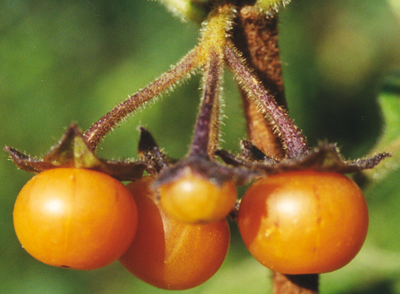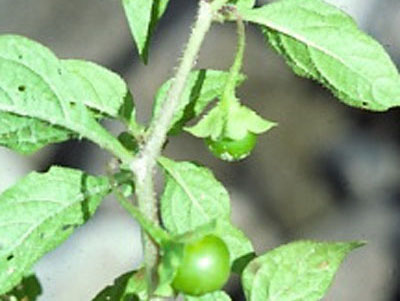

Fruits of Jaltomata (Solanaceae) |
revised 2023 |
Link to Jaltomata homepage |
The information on this page may be cited as a communication with professor Thomas Mione, Central Connecticut State University, Biology Department, Copernicus Hall, 1615 Stanley Street, New Britain, Connecticut 06050-4010, United States of America. |
Description of the genus Jaltomata |
| Fruit Color | Where Species Having A Certain Fruit Color Grow | Clade in Miller et al. 2011 |
|---|---|---|
| Orange | Many species of the Andes and J. werffii,the single species of the Galápagos Islands |
|
| Black/dark purple | Several species ranging from Arizona, USA to Bolivia | |
| Green (at fruit maturity) | In Mexico there are green-fruited morphs of two otherwise black/purple fruited species, J. procumbens (Cavanilles) J. L. Gentry (Williams 1985), and J. chihuahuensis (Bitter) Mione & Bye (Mione & Bye 1996). In Peru J. calliantha and J. quipuscoae have green fruits at maturity. |
|
| Red | Two species of the Andes (J. auriculata & J. sanctae-martae) and J. antillana, the species of the Greater Antilles |
 |
|
 |
In the figures above: The orange fruits are from collection Mione 707, not yet named (photo by Thomas Mione). |
|---|
| Figure 5. Fruit diversity within the Jaltomata procumbens complex. Accession 321 is distinct enough to have been given its own webpage (link to 321). Smallest units are mm. Photo by CCSU student Emmett P. Varricchio at the University of Connecticut greenhouse. |
| Figure 6. Wet mount of outermost part of fruit of Jaltomata procumbens; the purple pigment is almost certainly anthocyanin given that it occupies nearly all of the volume of the cell. No stain(s) were used. Slide made and photo by CCSU student Melissa R. Luna in the lab of Thomas Mione, December 2012, Mione 599. |